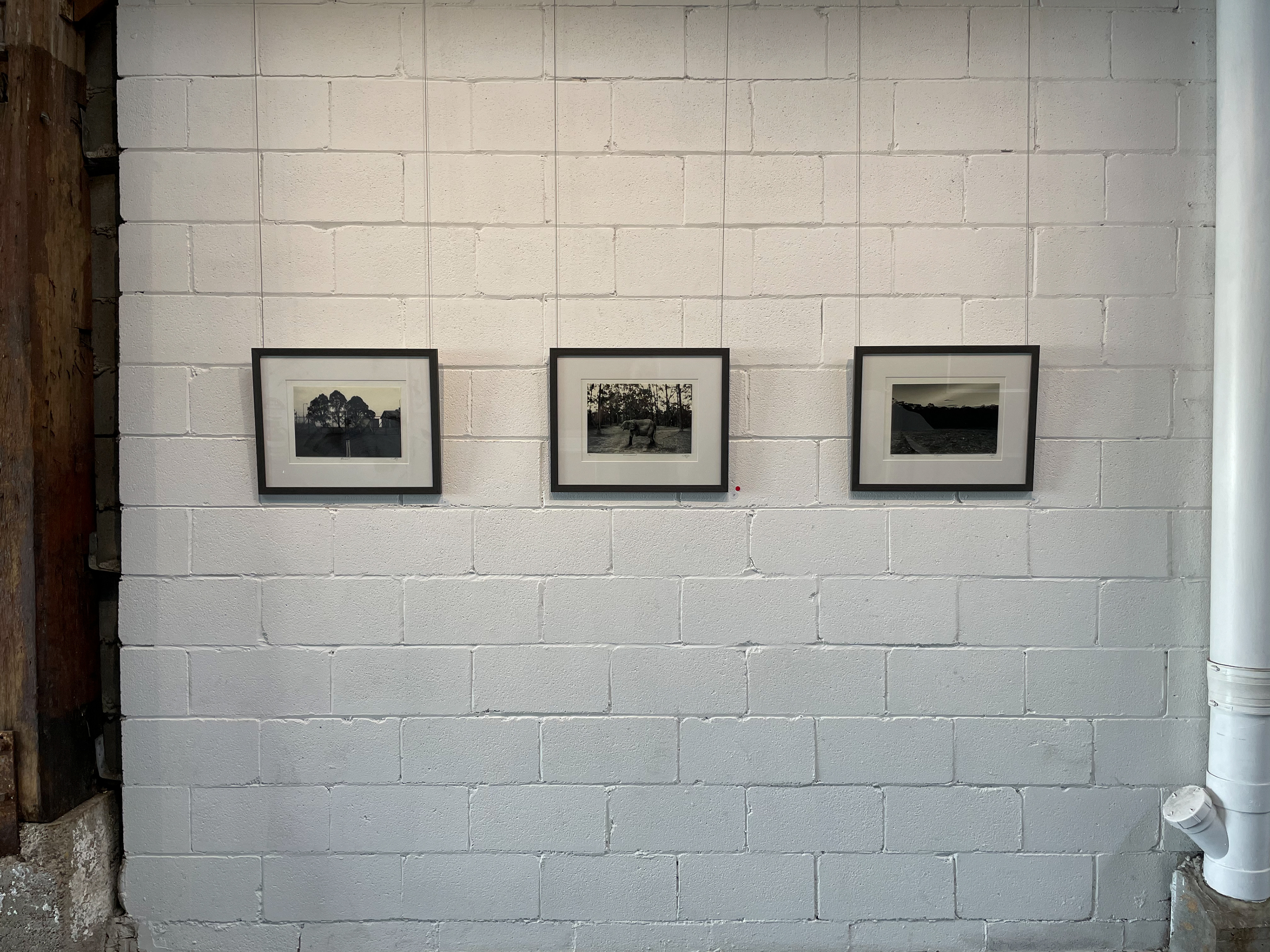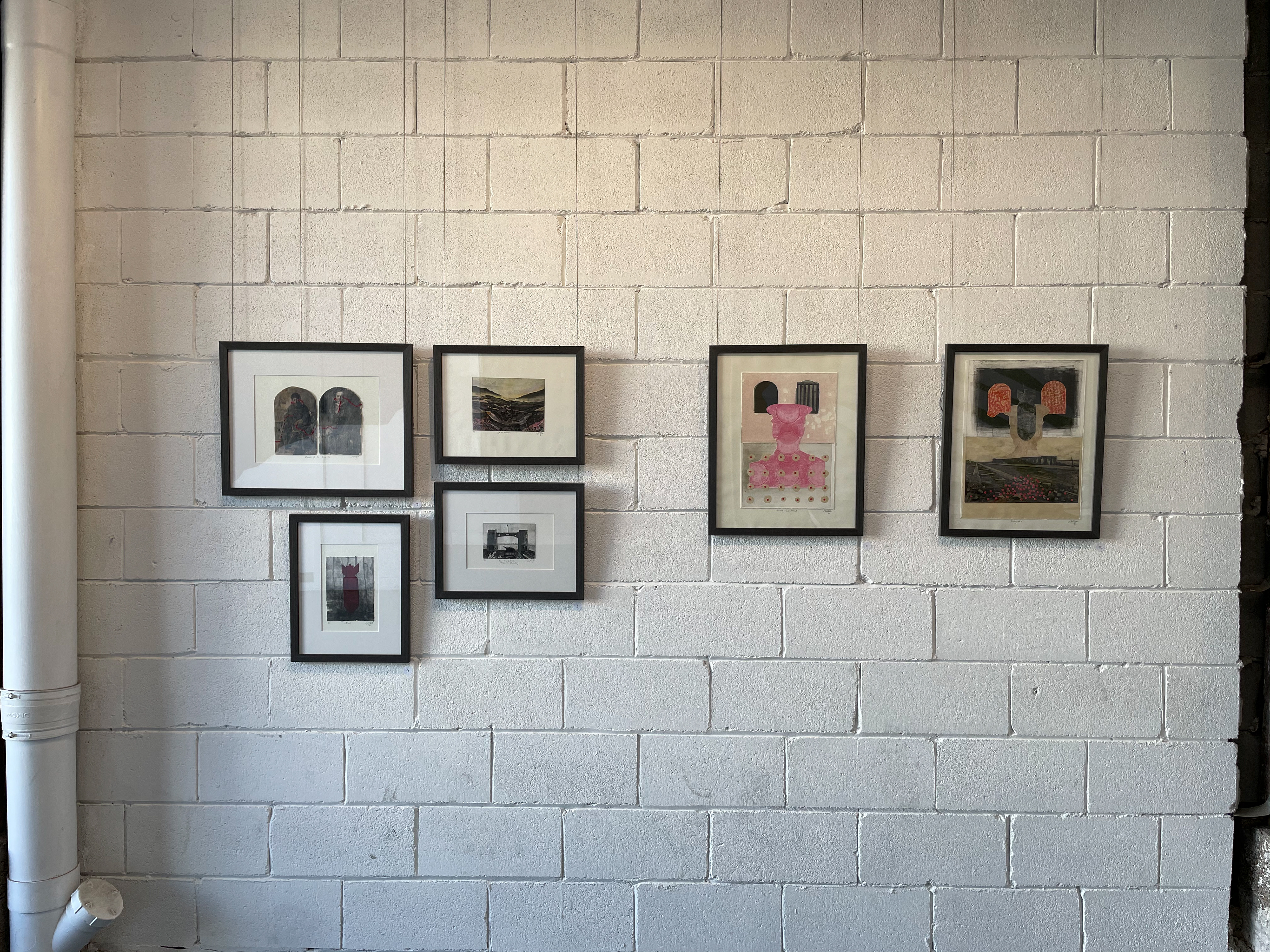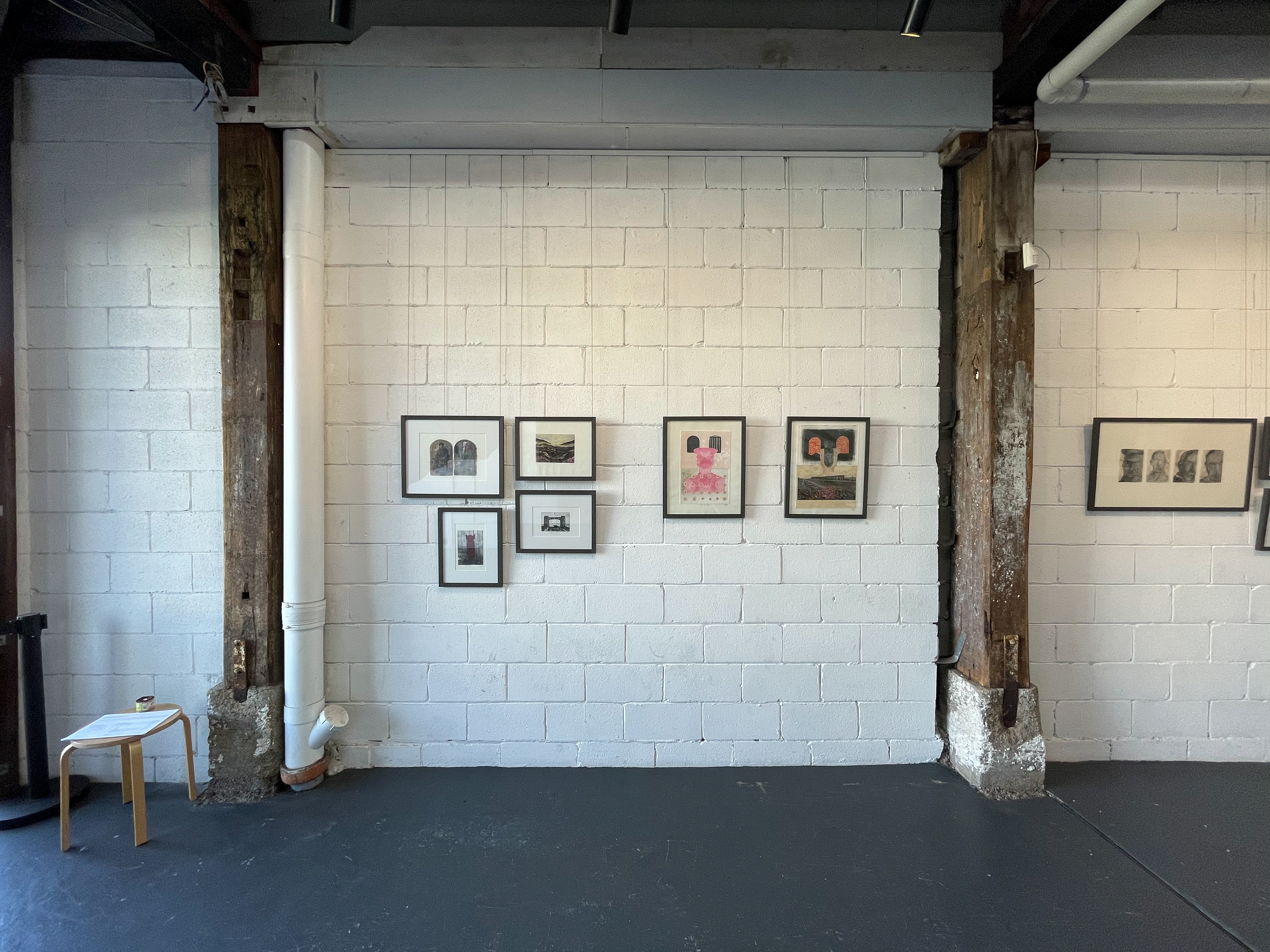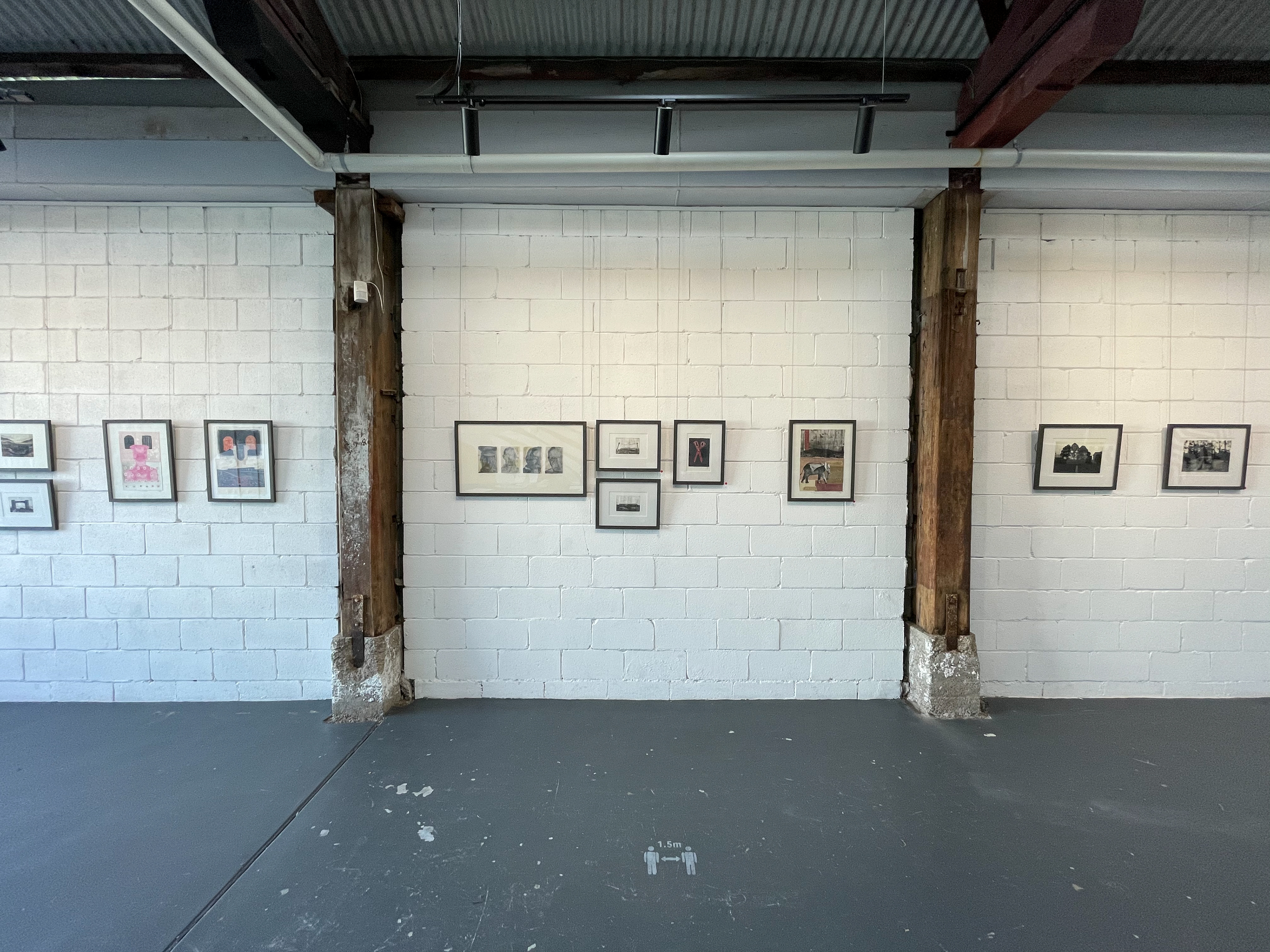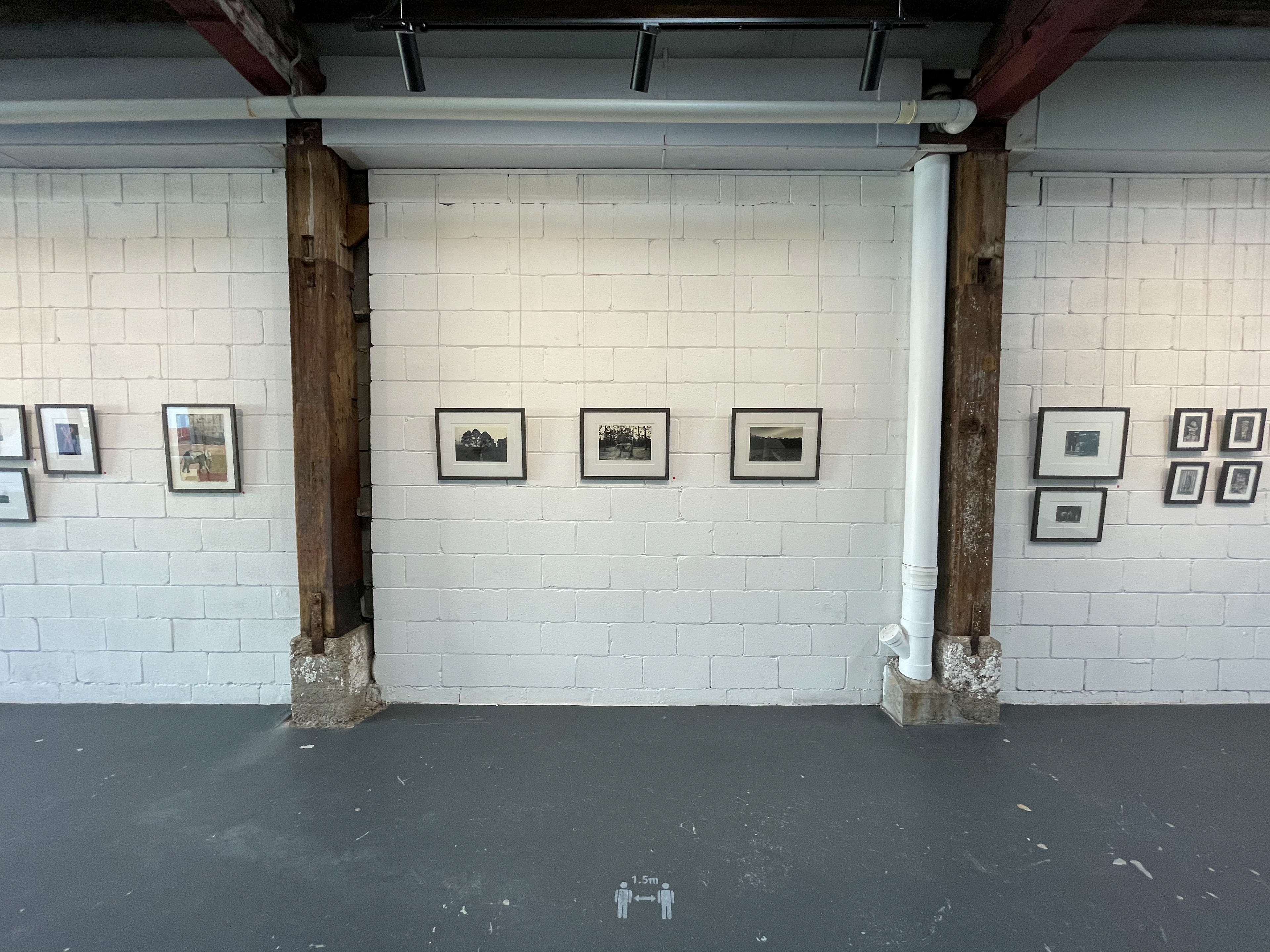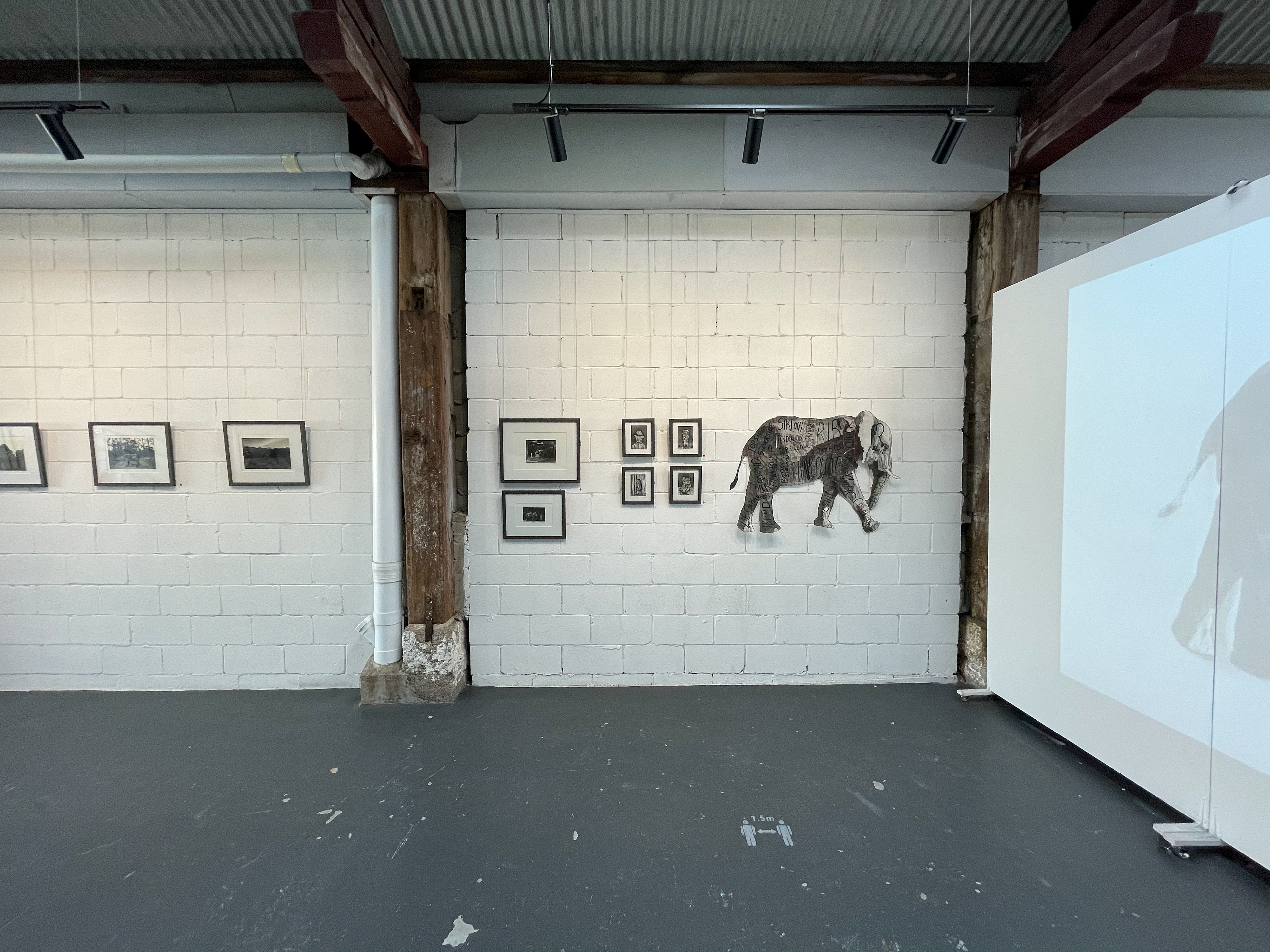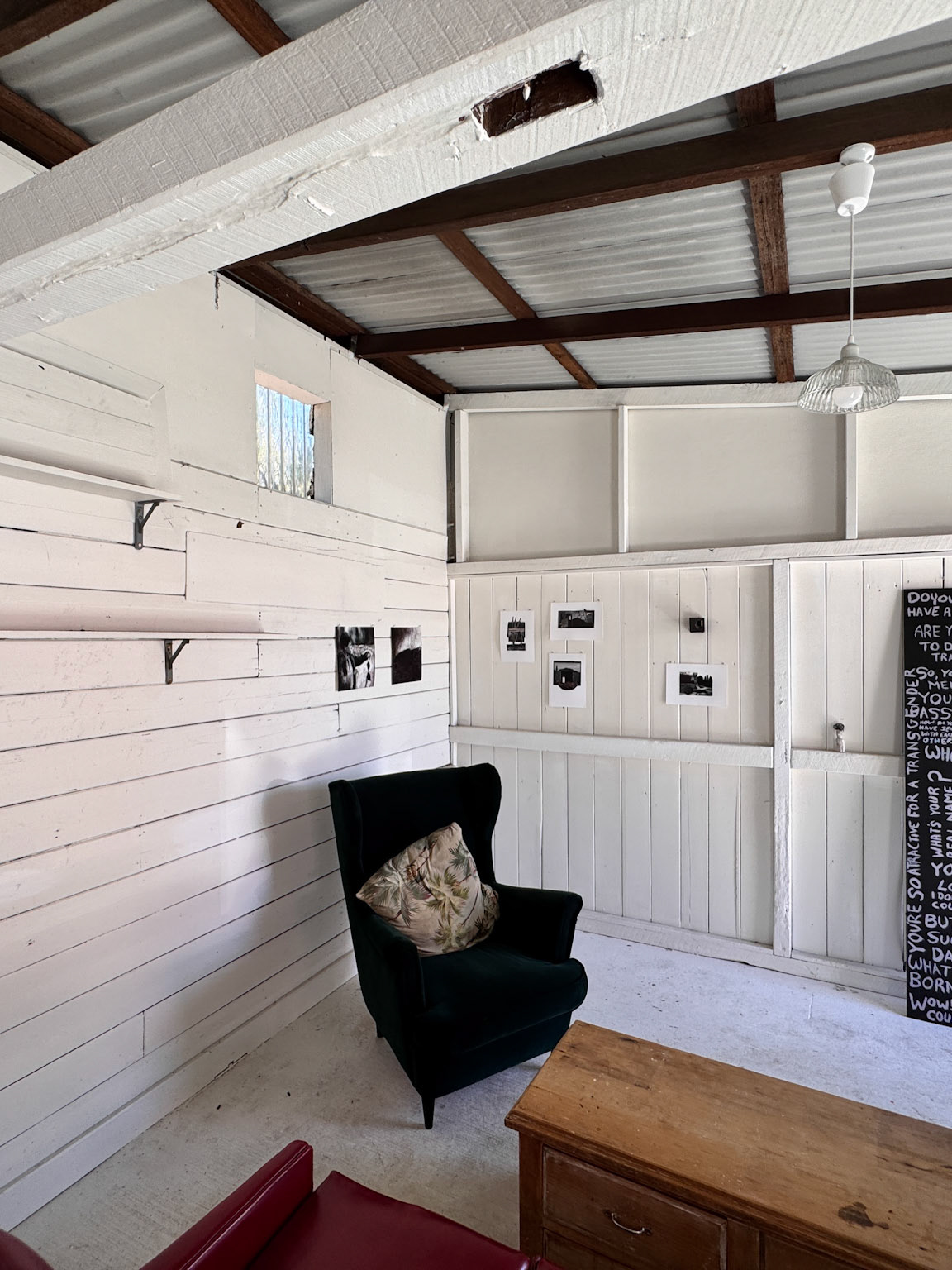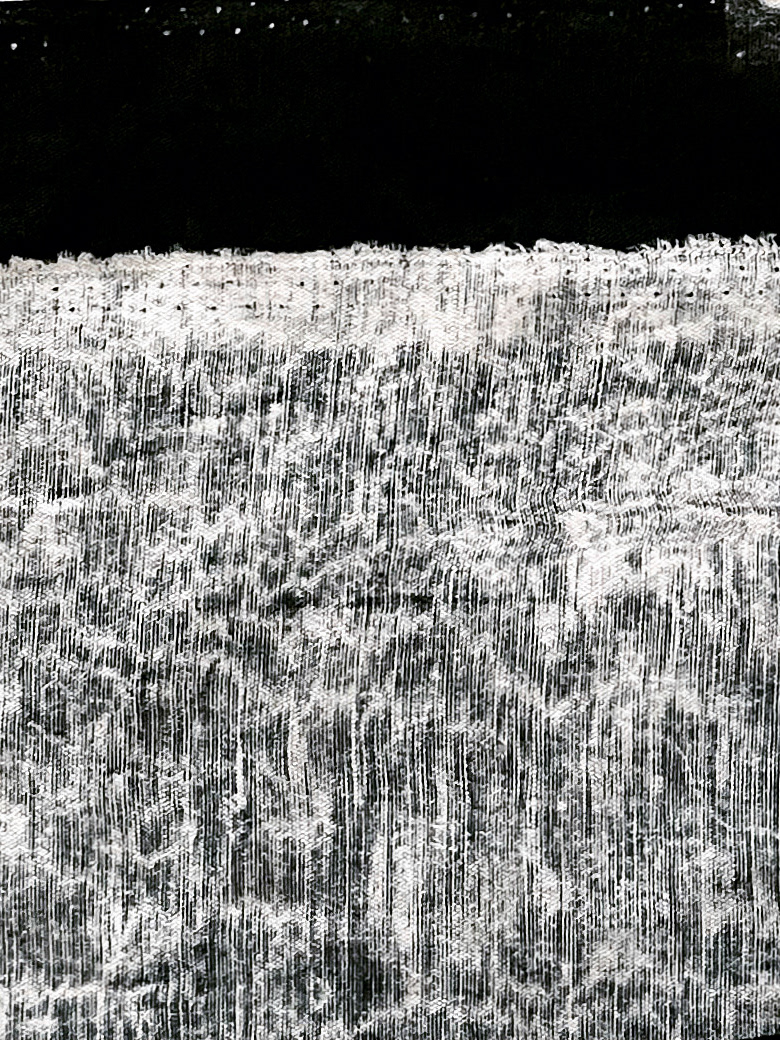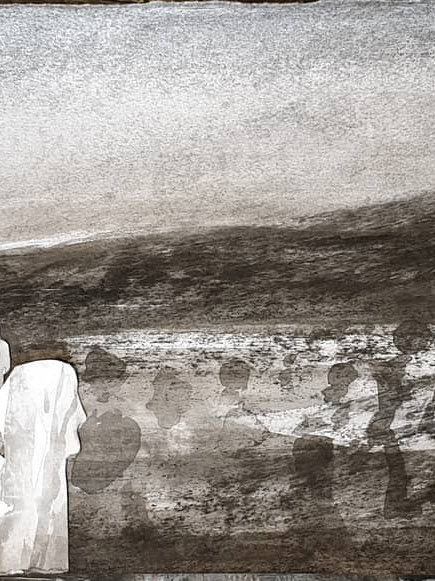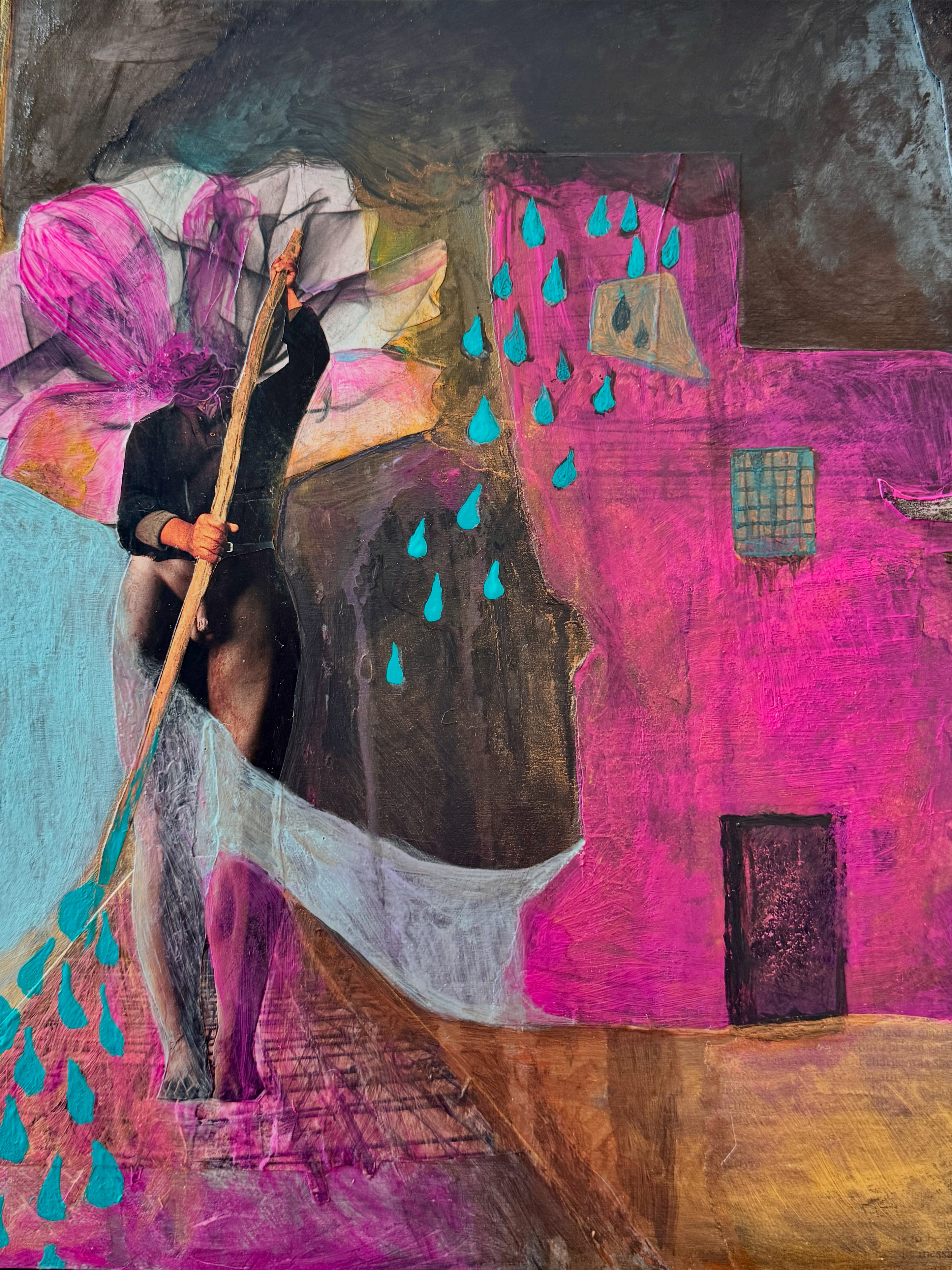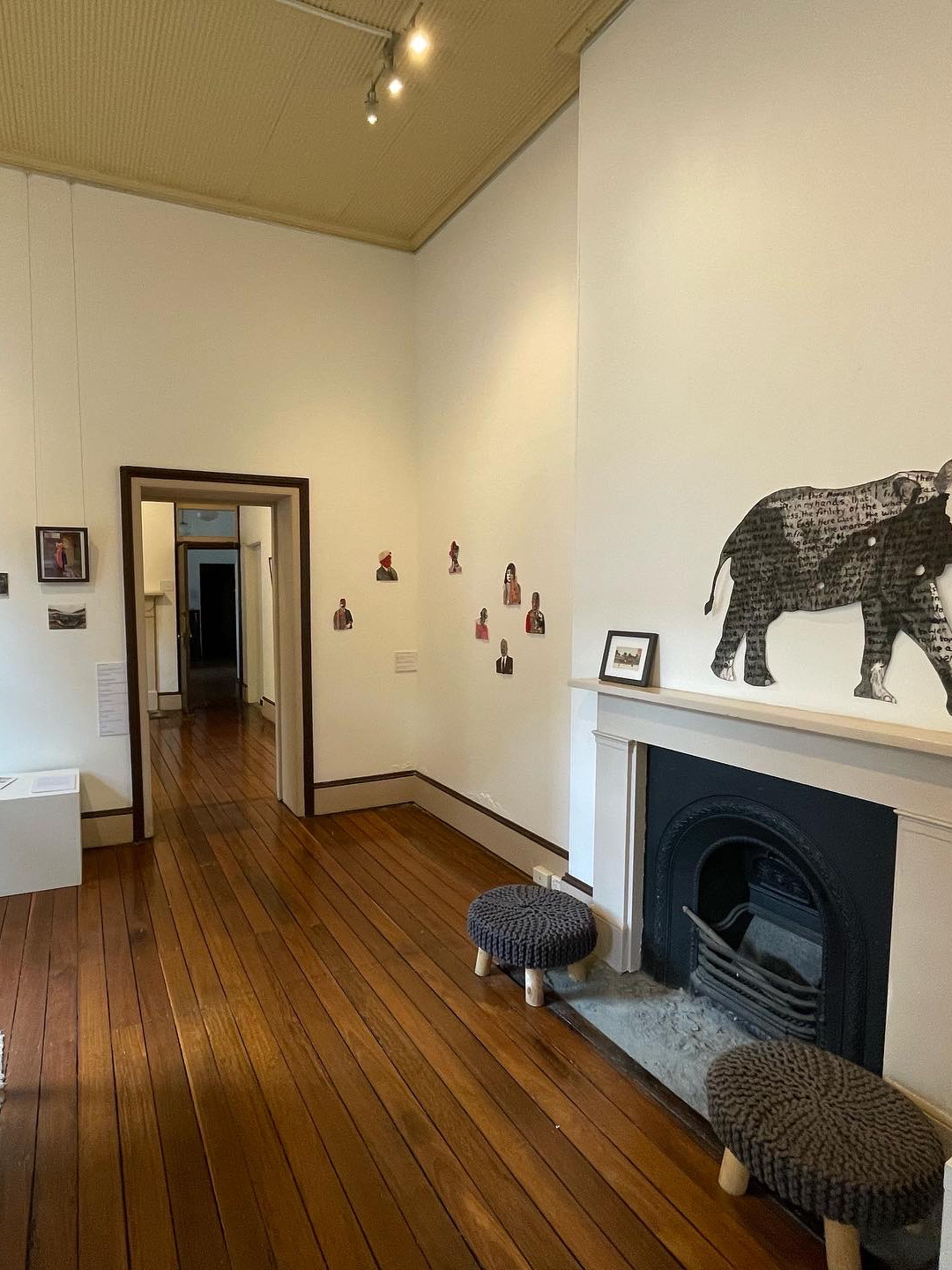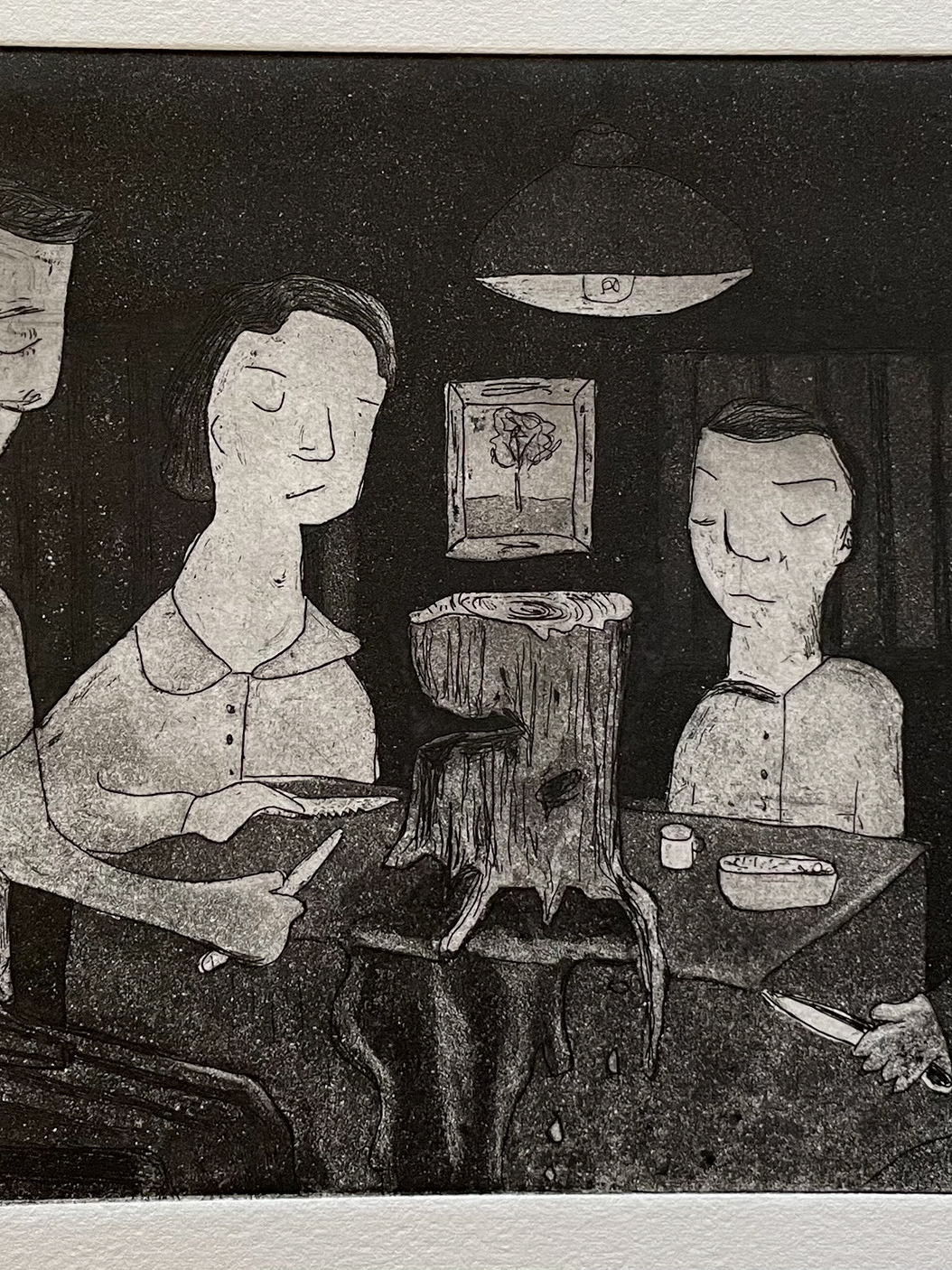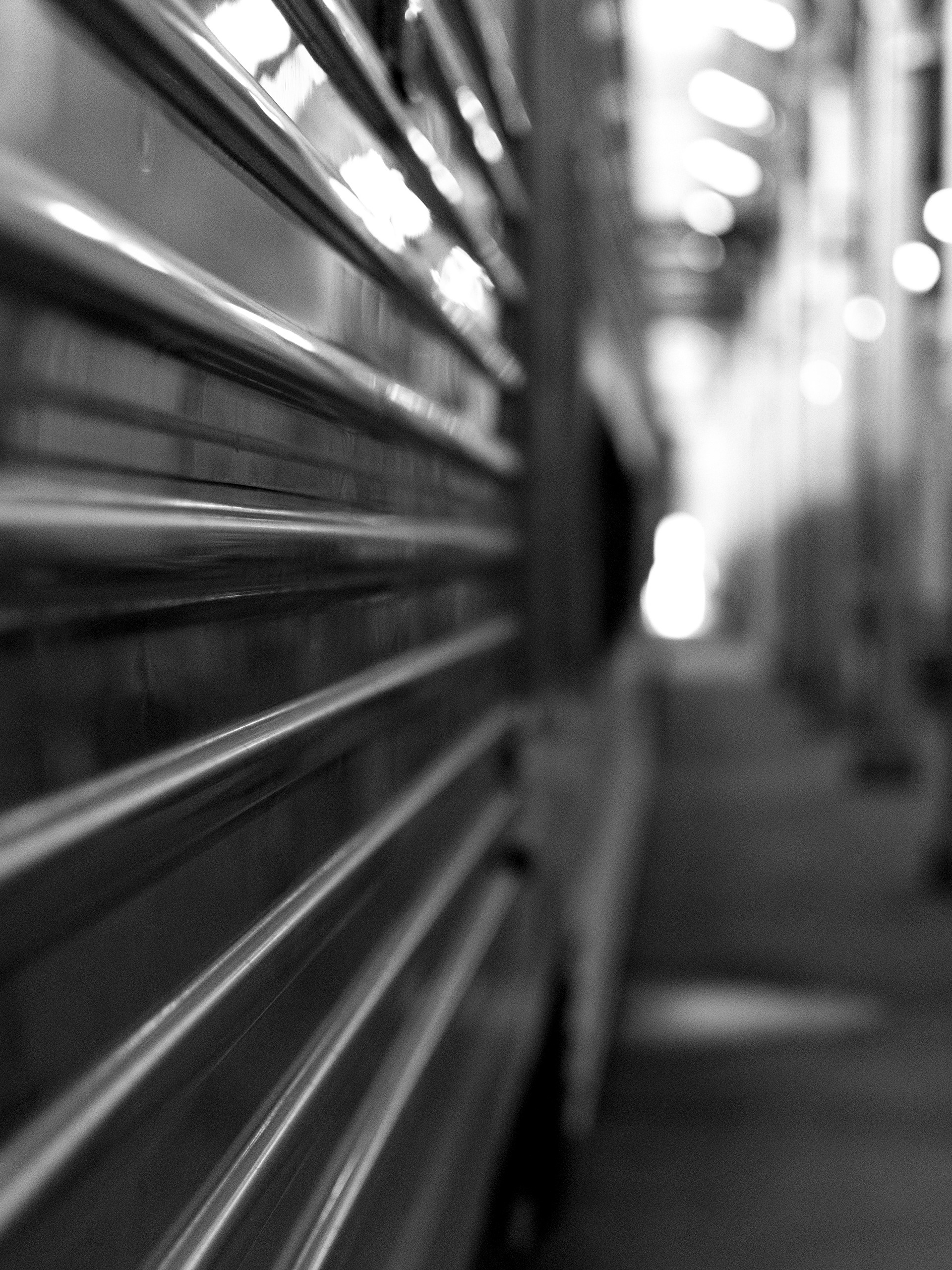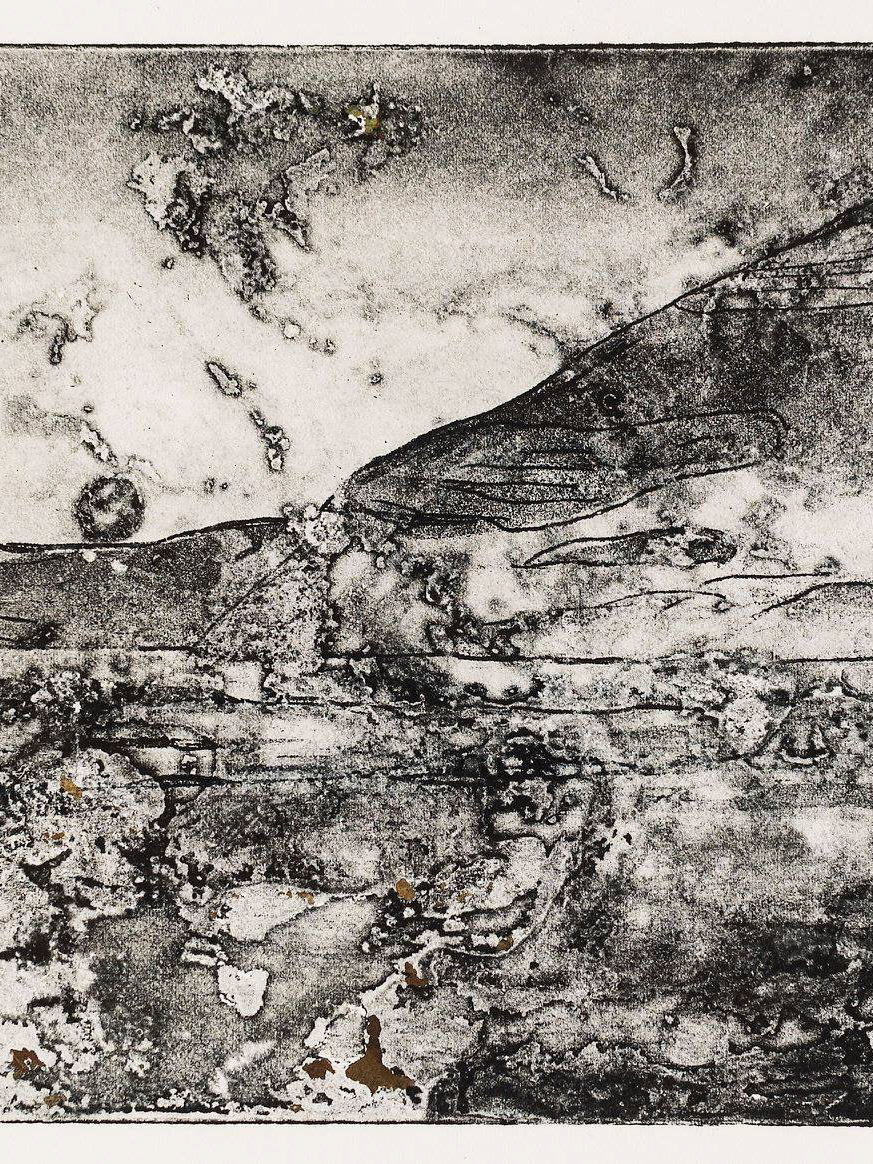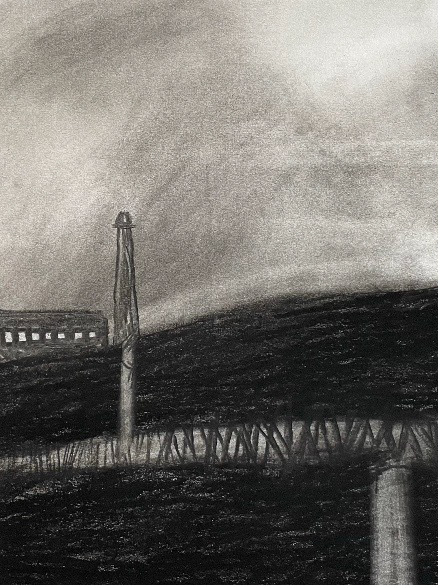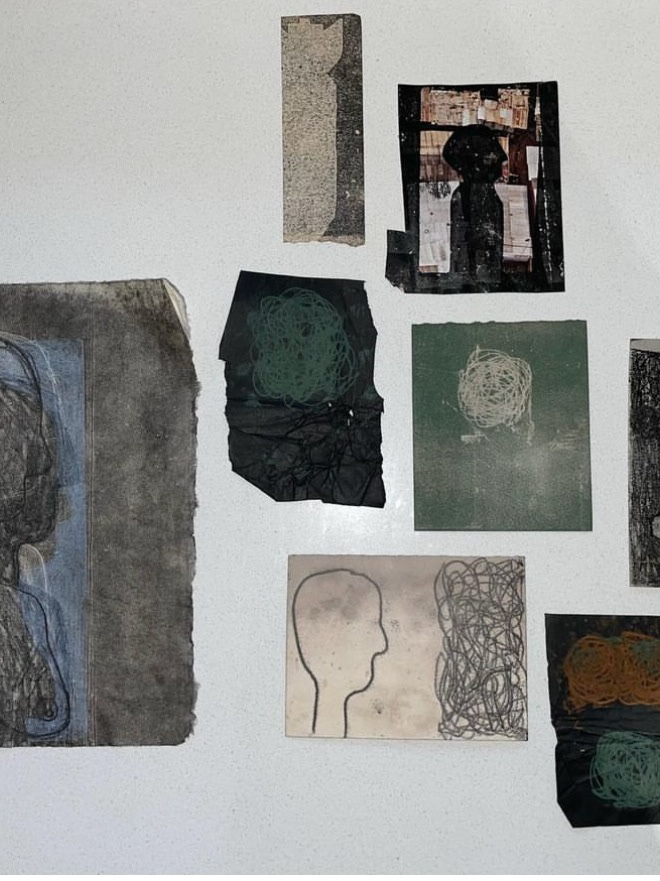In late 1936, George Orwell wrote an essay called Shooting an Elephant, about his ‘experience’ in British-occupied Burma. Dismantling an Elephant reflects on Orwell’s critique of colonialism and its pervasive and dominating influence on the colonised, and even the colonisers. In a new body of work, printmaker, Chris Clifton uses print-media and textiles to explore the legacy of colonial-era borders and their impact on our current social and political fabric, and the impact of our current social and political fabric on the boundaries of our ecological world.


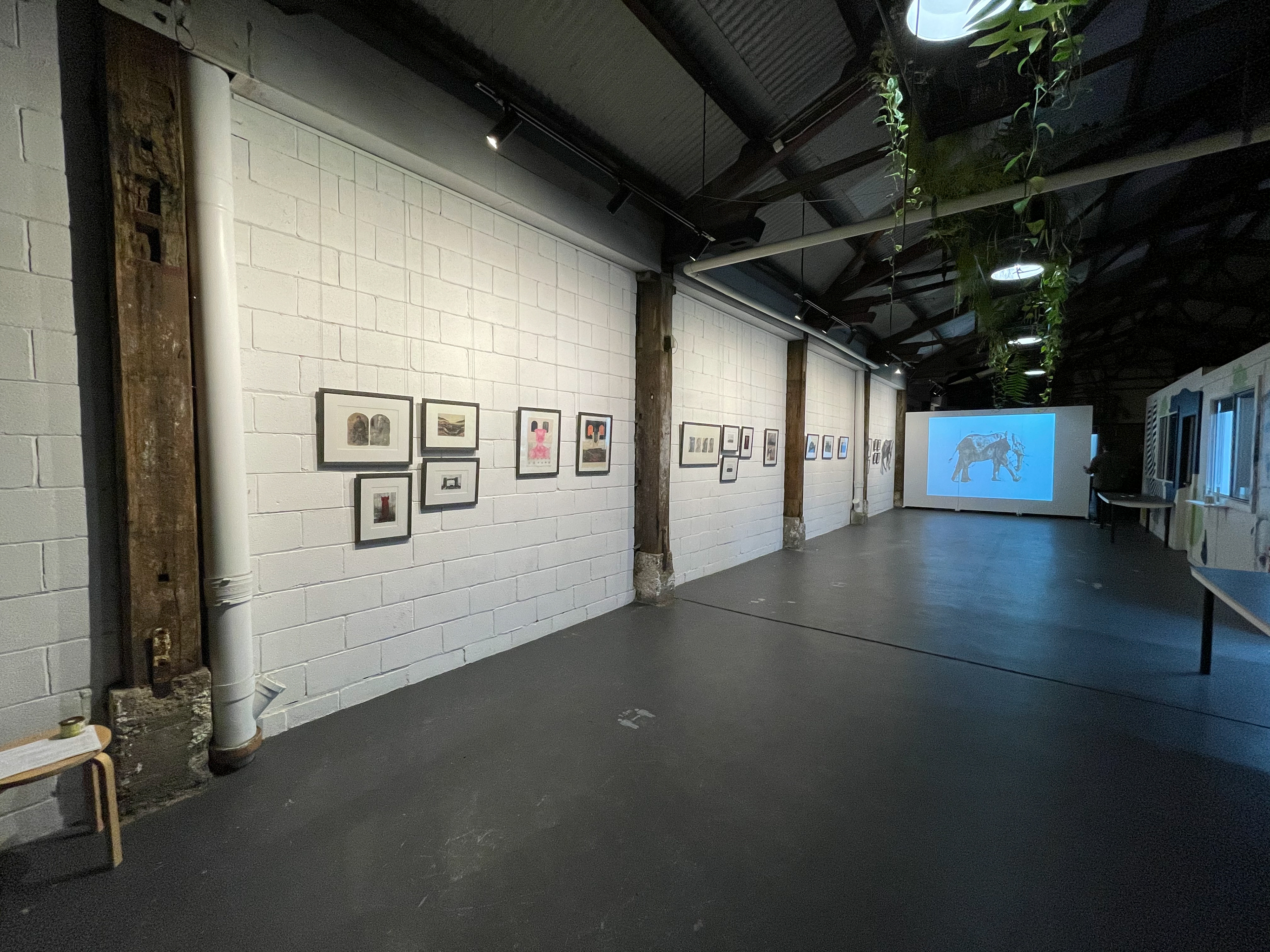
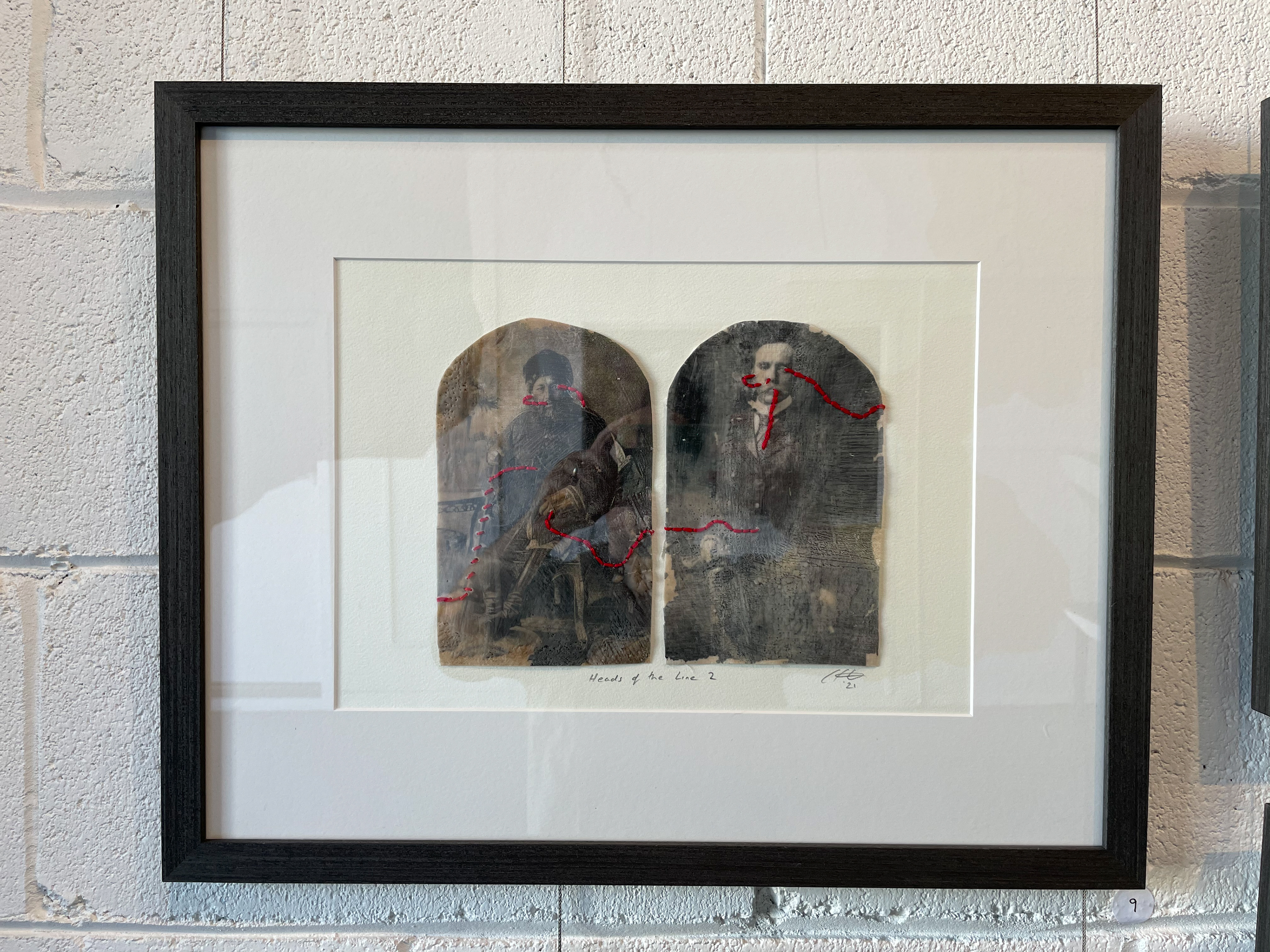
Heads of the line 2, reprographic transfer, linen, beeswax and hand embroidered cotton
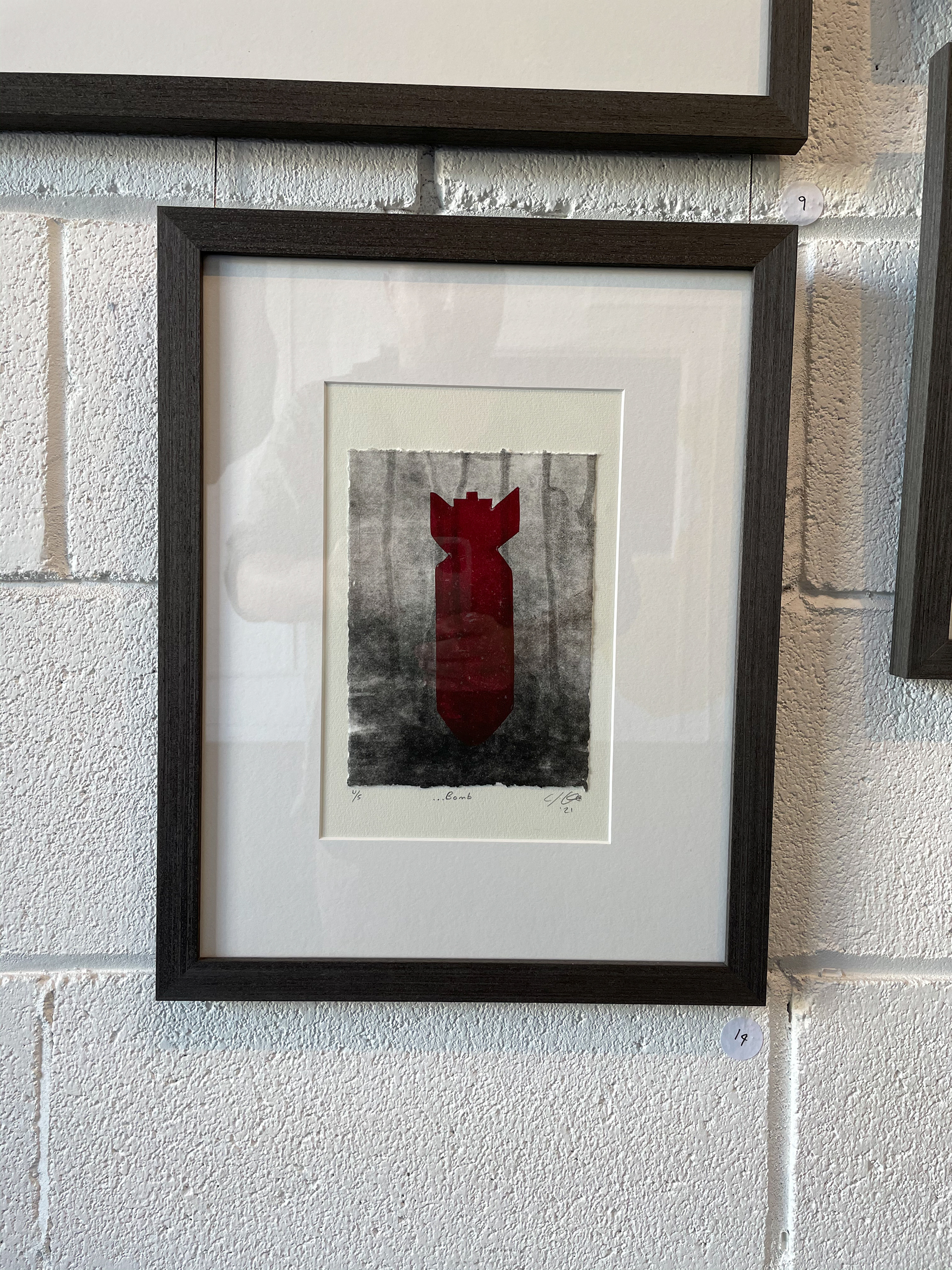
...bomb, etching, spit bite aquatint, relief print, monoprint
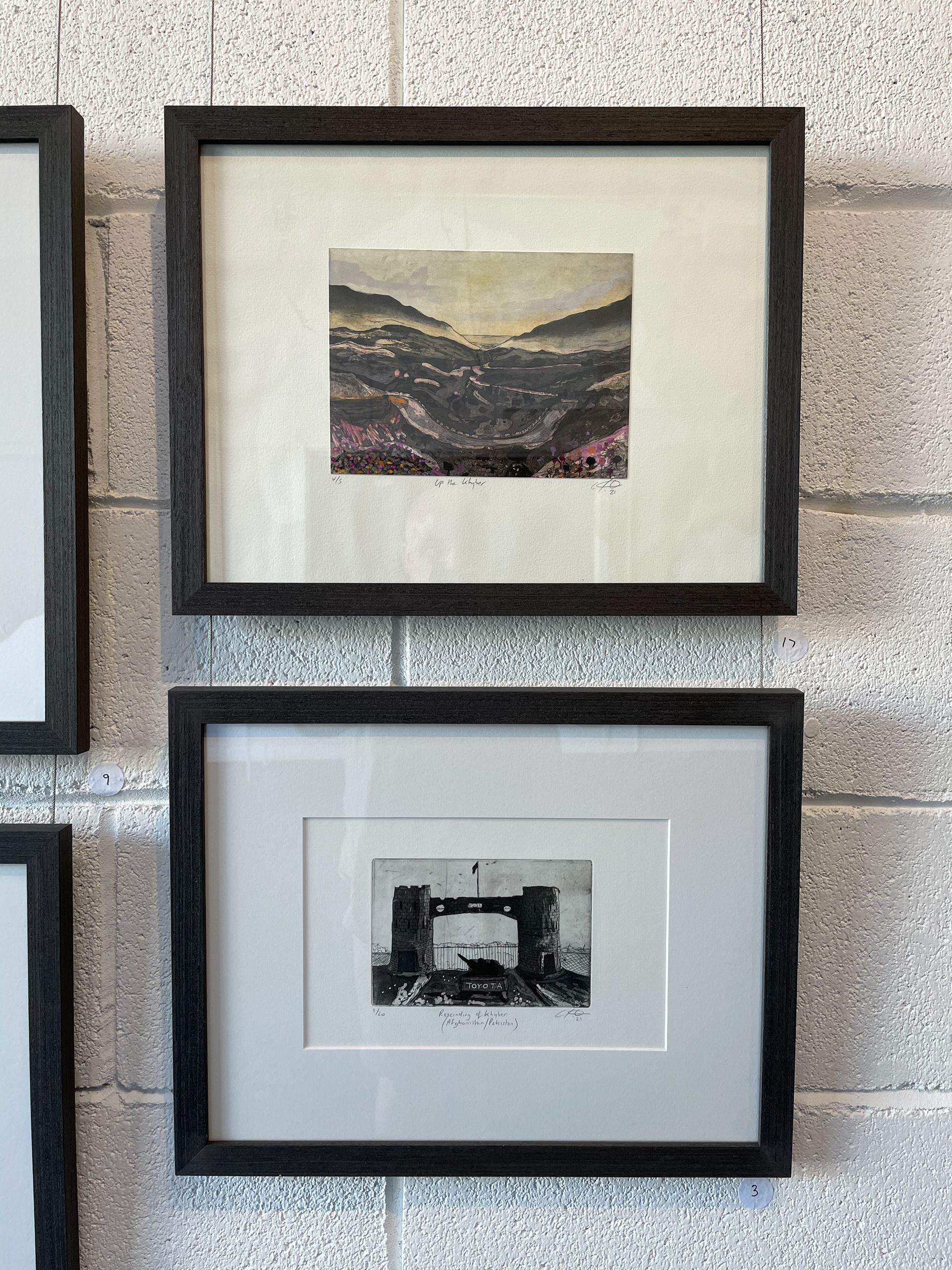
Upper the Khyber (top) - hand-coloured two-plate etching and aquatint; Rescinding of Khyber (bottom), etching and aquatint

Twenty-four percent, collaged prints and found paper
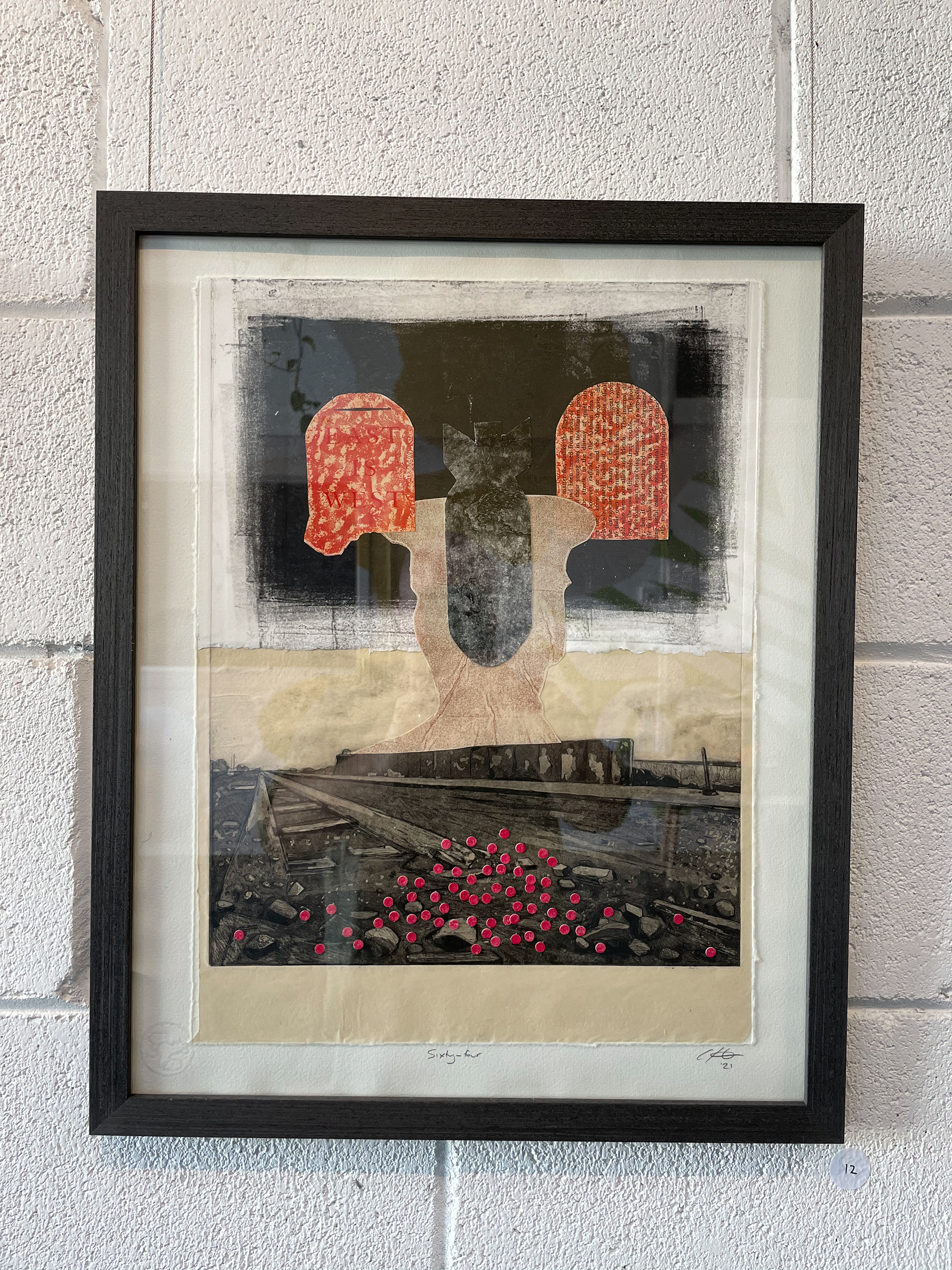
Sixty-four, collaged prints and found paper

Heads of the line, reprographic transfer, linen, beeswax and hand embroidered cotton
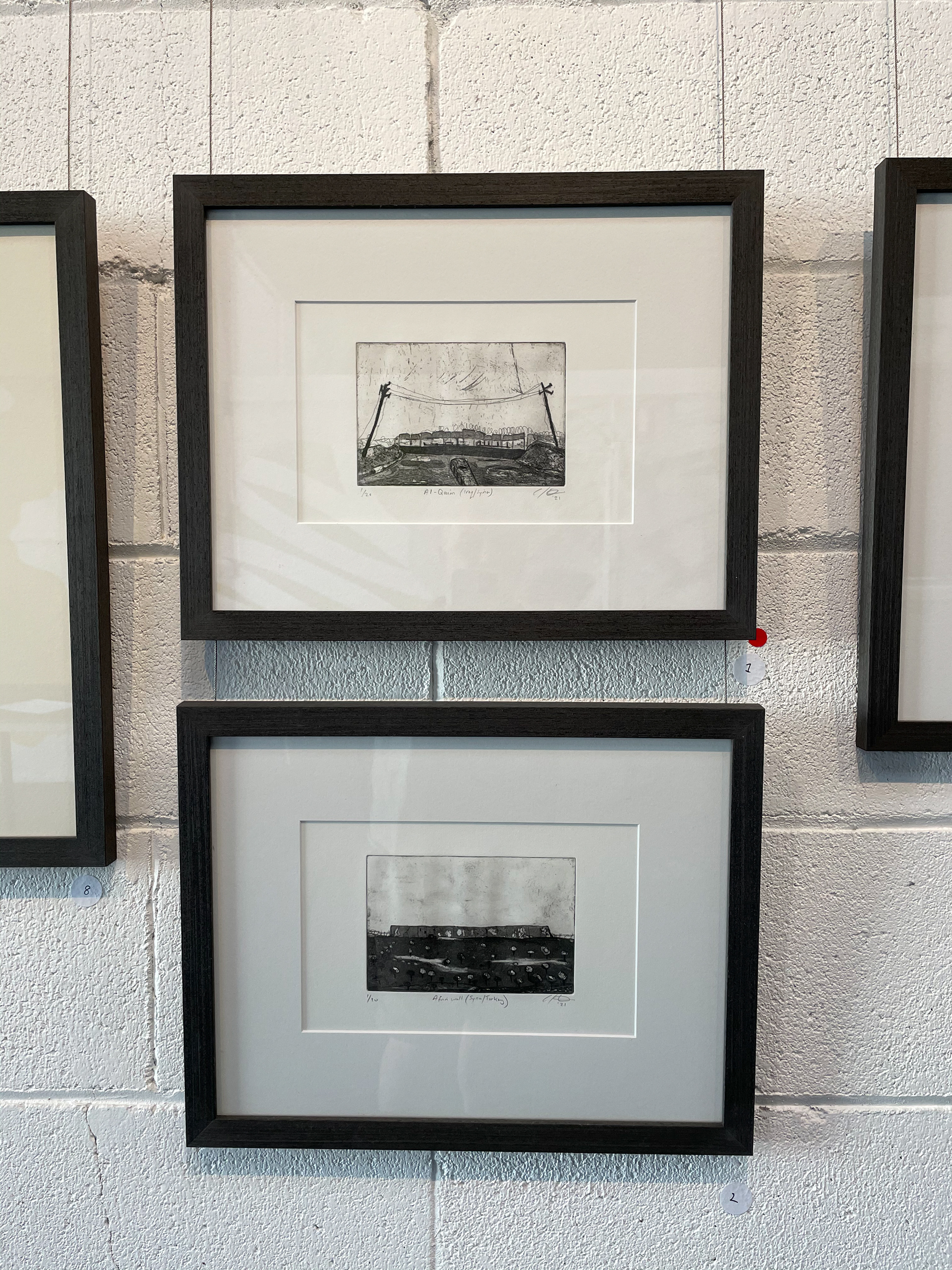
Al-Qaim (top) and Afrin Wall (bottom), etching and aquatint

Rock, paper, scissors.... collaged prints
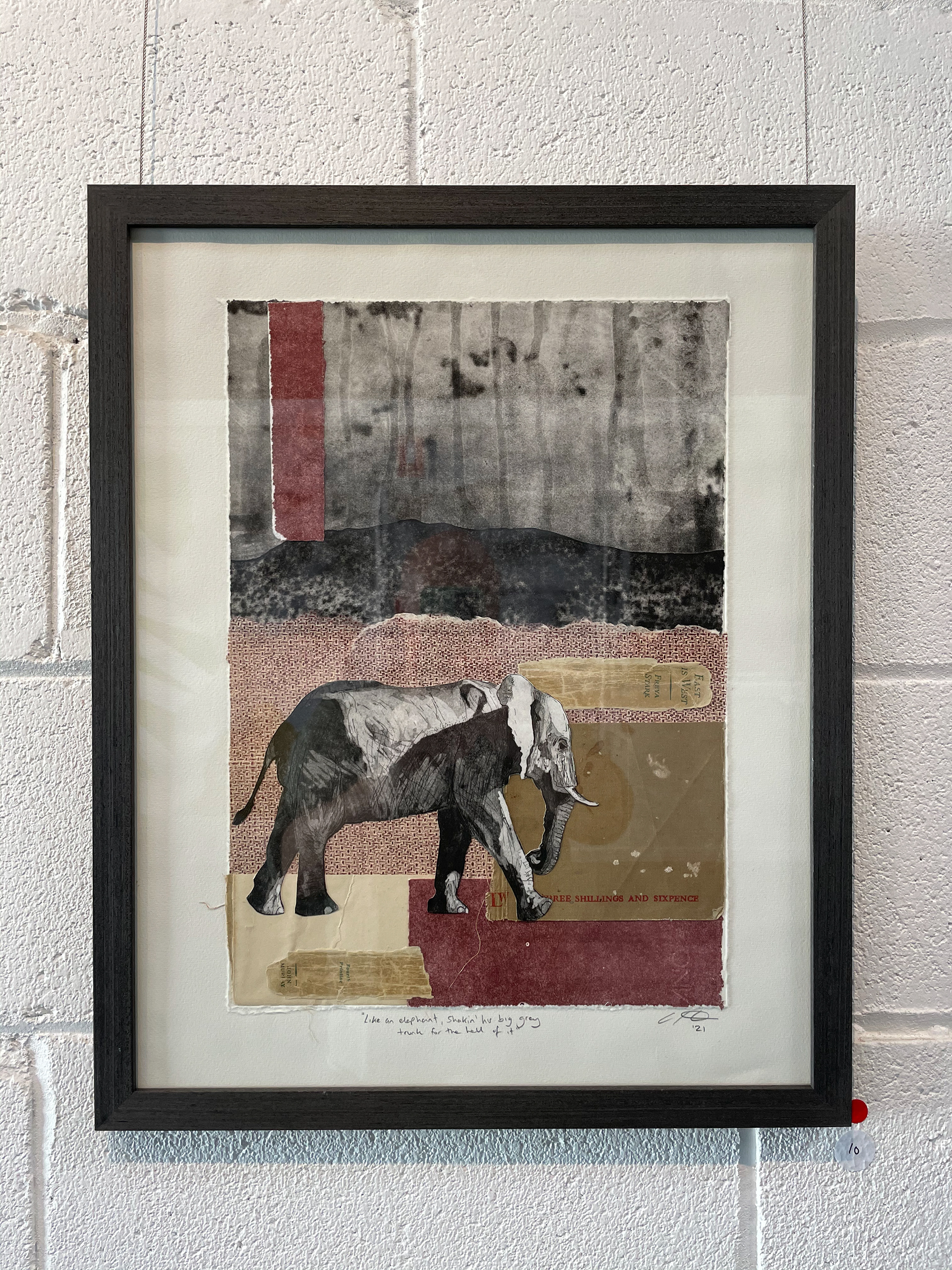
Like an elephant, shakin' his big grey trunk for the hell of it, collaged prints and found paper
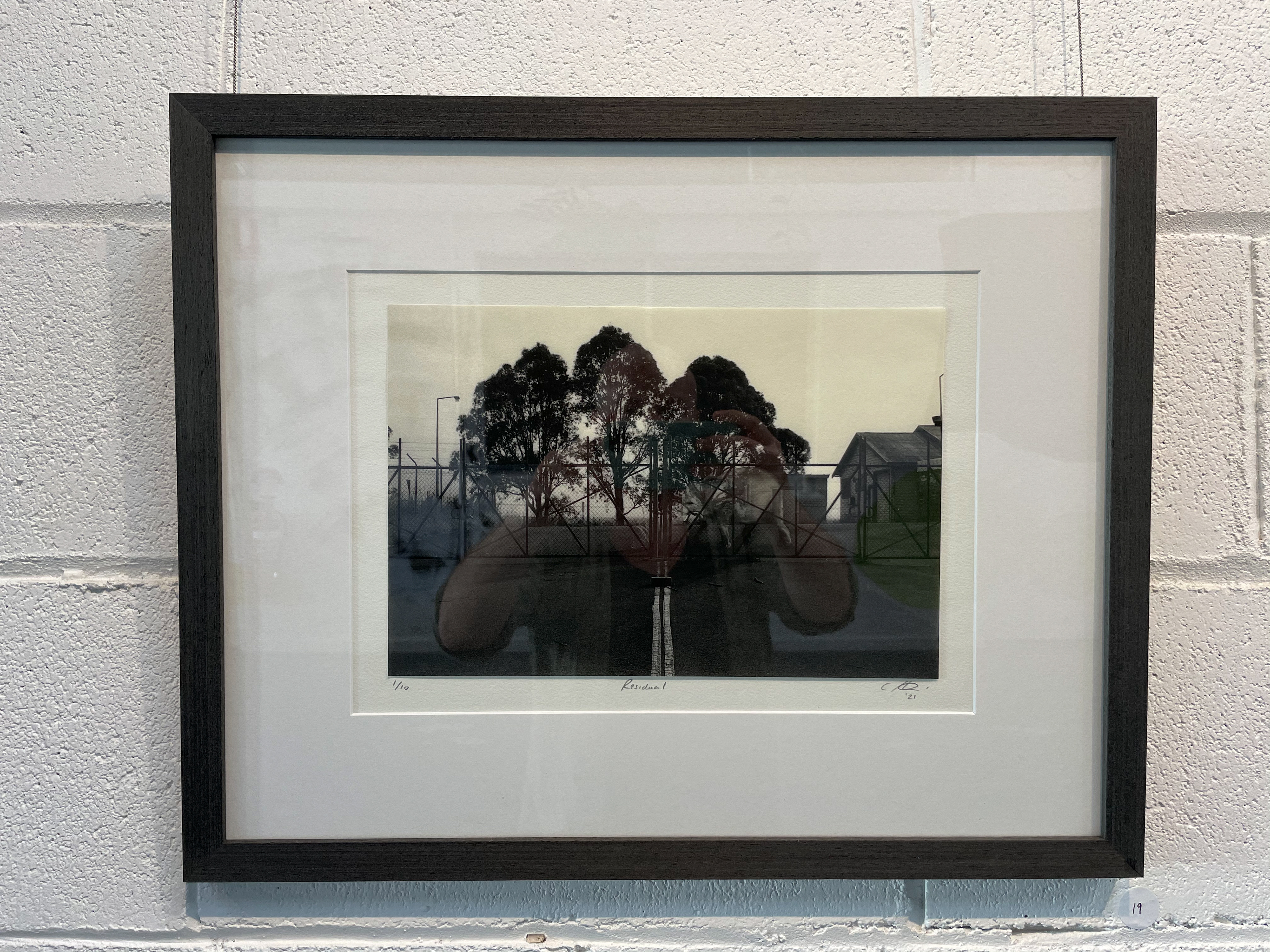
Residual, digital print on Awagami Kozo Thin Natura
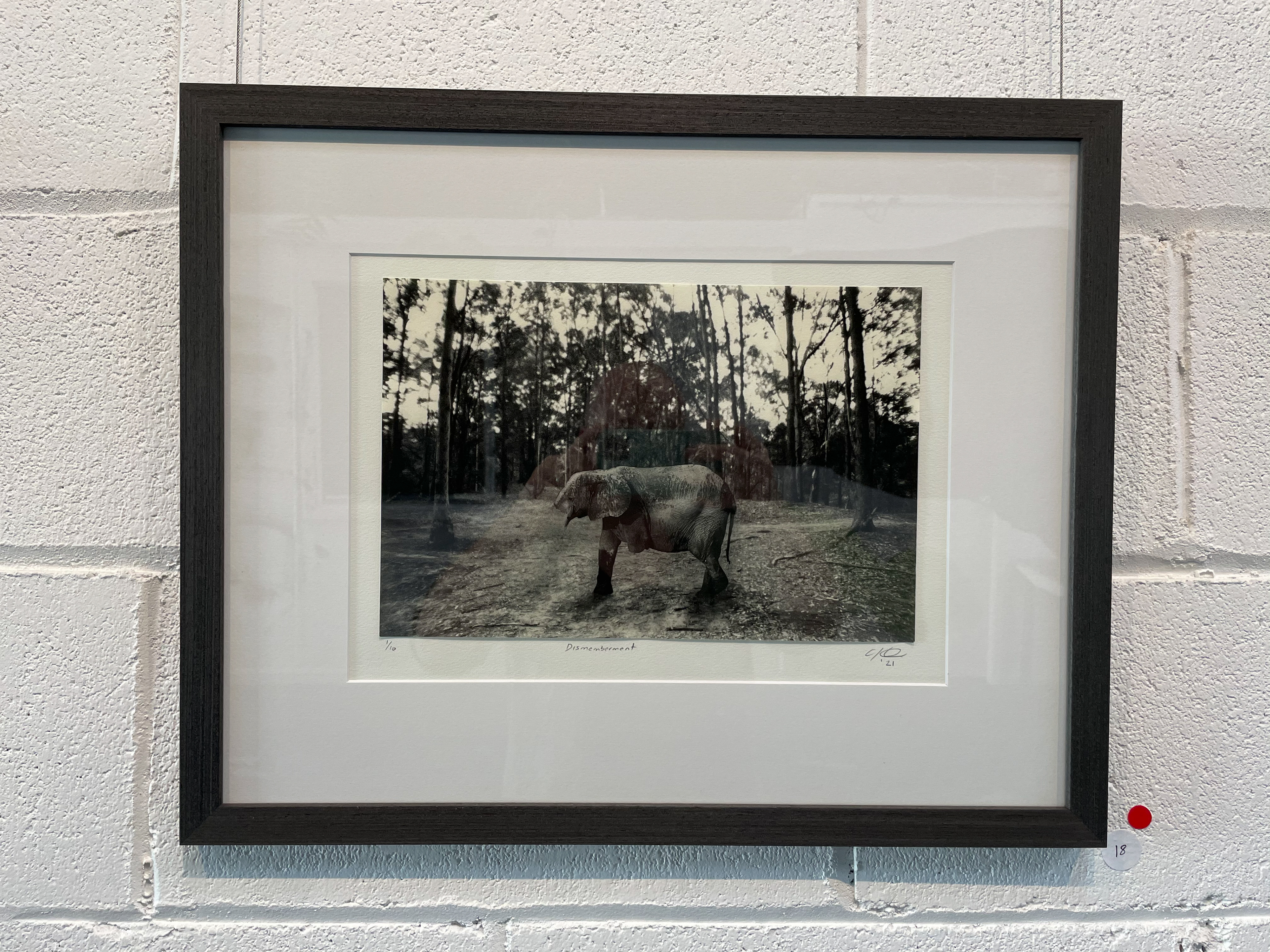
Dismemberment, digital print on Awagami Kozo Thin Natura

Lingerer, digital print on Awagami Kozo Thin Natura

Kaavan (top) and The curtain falls (bottom), etching, aquatint and mezzotint

Shooting an Elephant Series, etchings
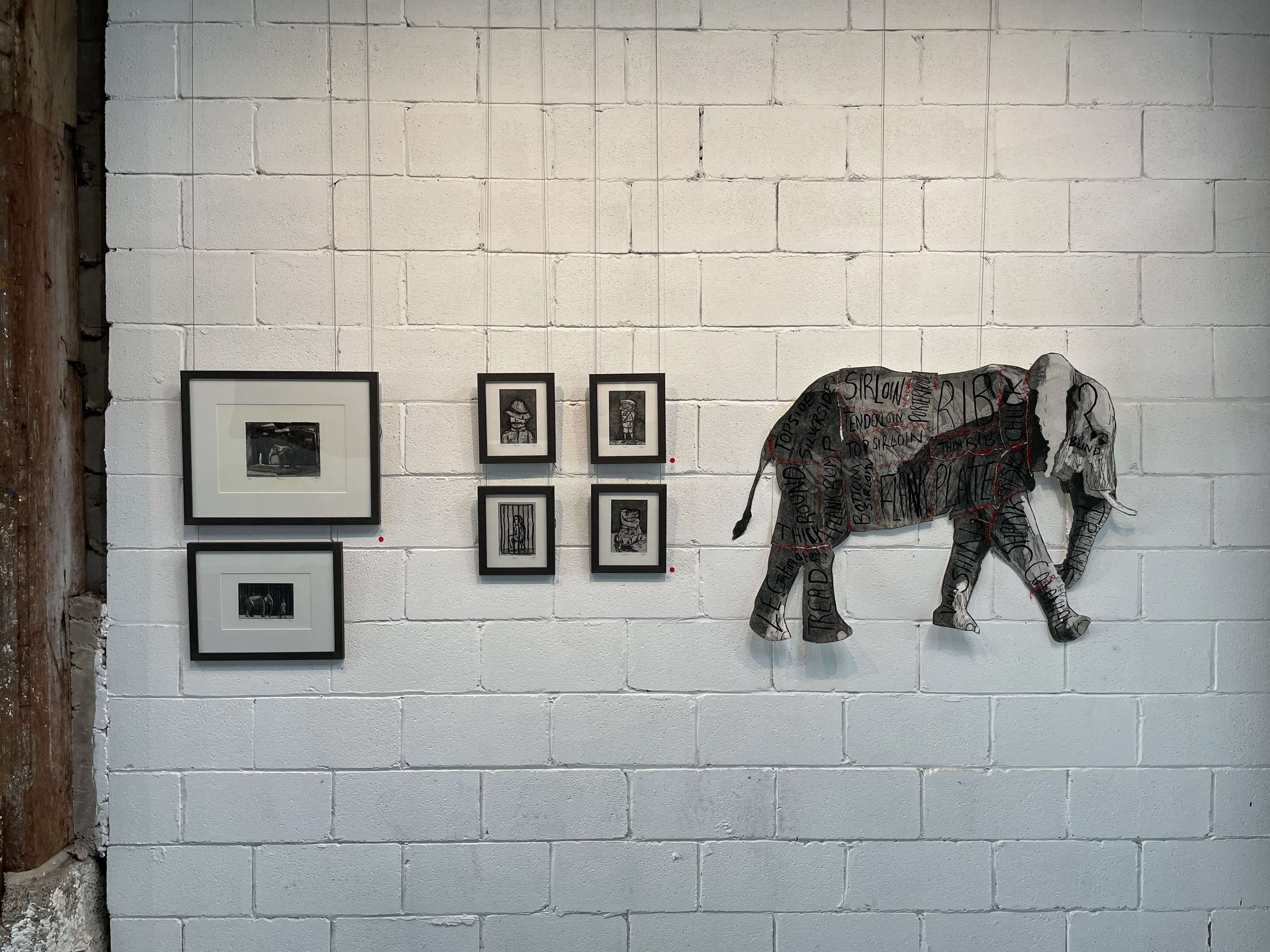
Prime elephant cuts (right). digital print on Ilford Washi Torinoko, torn, hand stitched, brush and ink
